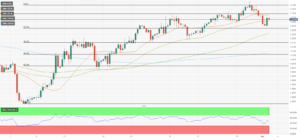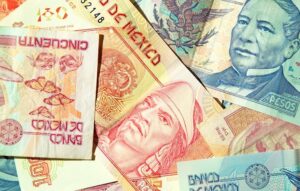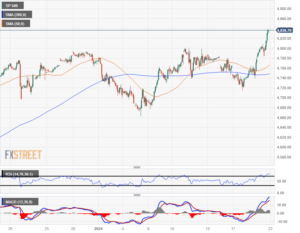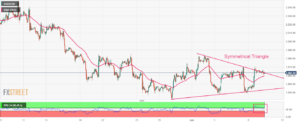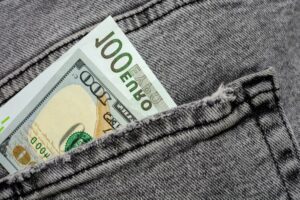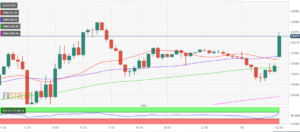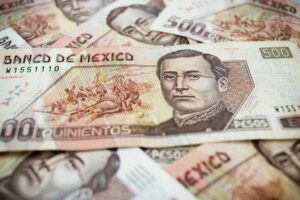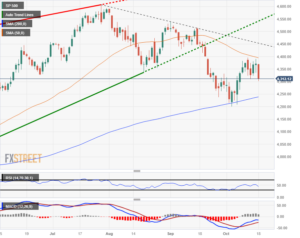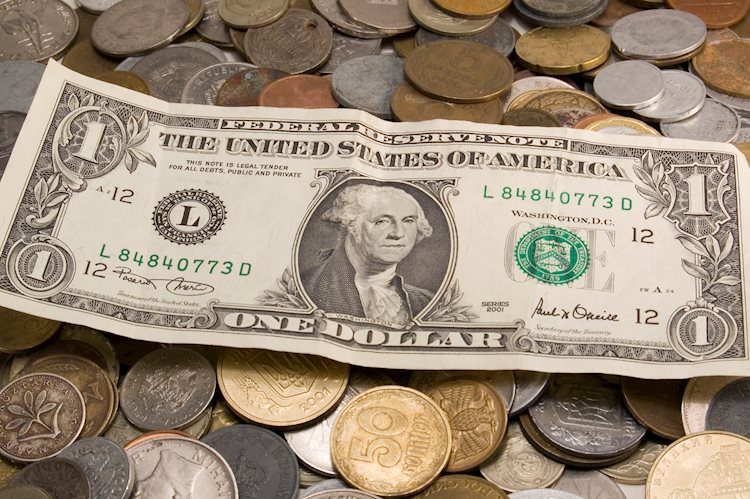
- The US Dollar broke higher on Tuesday in late US trading hours as reports from Capitol Hill pointed to no resolution in sight.
- Durable Goods Orders data is key on Wednesday’s economic calendar.
- The US Dollar Index reaches a new 10-month high above 106.32.
The US Dollar (USD) keeps posting new highs for the past 40 weeks, with the main driver this week being the stalemate on Capitol Hill. Both the Senate and the House are pushing bills to the floor, proposals that on its own are not enough to avert a shutdown by October 1. As the deadline looms, it becomes more likely that by Saturday the US government will be shut down and markets could be left in the dark on where the US is in terms of macroeconomic conditions, as an extended halt would mean that many agencies stop publishing economic data.
The main event for Wednesday will be Durable Goods Orders, which tell a bit more on the health of the US manufacturing sector.. Expectations are for a marginal 0.1% increase, down from the 0.4% rise seen in July. The US Energy Information Administration (EIA) will also publish its US crude stockpile numbers as the current Cushing stockpile reserve is at the lowest level in a decade. The numbers might trigger another leg higher in Oil prices.
Daily digest: US Dollar labelled safe haven
- The Mortgage Bankers Association (MBA) will issue at 11:00 GMT its Mortgage Applications number for last week. Previous number was a 5.4% increase.
- Durable Goods numbers will come at 12:30 GMT. Durable Goods without transportation are expected to take a step back, from 0.4% increase to 0.1%. The headline index previously declined 5.2%, and markets expectations are for a less sharper fall of 0.5%.
- The highly anticipated EIA US crude stockpile report is due at 14:30. Next to the crude stockpile change, the current Cushing reserves will be a market driving factor for Oil prices.
- The US Treasury is expected to hit the markets with a 5-year bond auction at 17:00.
- Equities are all in the green across the board, from Asia to the US futures. Markets are trying to shrug off the negative gloom from the past few days.
- The CME Group FedWatch Tool shows that markets are pricing in an 80.4 % chance that the Federal Reserve will keep interest rates unchanged at its meeting in November.
- The benchmark 10-year US Treasury yield traded as high as 4.51% and takes a small step back from Monday’s peak as investors start to buy safe bonds as a shield for any possible US government shutdown.
US Dollar Index technical analysis: Are we there yet?
The US Dollar keeps printing new 10-month highs on a daily basis this week with several main drivers making the Greenback a safe haven. Not only is the possible US government shutdown a nearby factor, the current interest-rate differential and hawkish comments from several US Federal Reserve members makes it clear to markets that policy won’t change anytime soon. This validates the US Dollar Index (DXY) from creeping higher on track for a new 52-week high.
The US Dollar Index opens above 106.00, though the overheated RSI might make it difficult to hold this level. Traders that want to hit a new 52-week high need to be aware that a lot of road needs to be covered towards 114.78. Rather look for 107.19, the high of November 30, 2022, as the next profit target on the upside.
On the downside, the recent resistance at 105.88 should be seen as first support. Still, it has just been broken to the upside, so it isn’t likely to be a strong barrier. Rather look for 105.12 to do the trick and keep the DXY above 105.00.
US Dollar FAQs
The US Dollar (USD) is the official currency of the United States of America, and the ‘de facto’ currency of a significant number of other countries where it is found in circulation alongside local notes. It is the most heavily traded currency in the world, accounting for over 88% of all global foreign exchange turnover, or an average of $6.6 trillion in transactions per day, according to data from 2022.
Following the second world war, the USD took over from the British Pound as the world’s reserve currency. For most of its history, the US Dollar was backed by Gold, until the Bretton Woods Agreement in 1971 when the Gold Standard went away.
The most important single factor impacting on the value of the US Dollar is monetary policy, which is shaped by the Federal Reserve (Fed). The Fed has two mandates: to achieve price stability (control inflation) and foster full employment. Its primary tool to achieve these two goals is by adjusting interest rates.
When prices are rising too quickly and inflation is above the Fed’s 2% target, the Fed will raise rates, which helps the USD value. When inflation falls below 2% or the Unemployment Rate is too high, the Fed may lower interest rates, which weighs on the Greenback.
In extreme situations, the Federal Reserve can also print more Dollars and enact quantitative easing (QE). QE is the process by which the Fed substantially increases the flow of credit in a stuck financial system.
It is a non-standard policy measure used when credit has dried up because banks will not lend to each other (out of the fear of counterparty default). It is a last resort when simply lowering interest rates is unlikely to achieve the necessary result. It was the Fed’s weapon of choice to combat the credit crunch that occurred during the Great Financial Crisis in 2008. It involves the Fed printing more Dollars and using them to buy US government bonds predominantly from financial institutions. QE usually leads to a weaker US Dollar.
Quantitative tightening (QT) is the reverse process whereby the Federal Reserve stops buying bonds from financial institutions and does not reinvest the principal from the bonds it holds maturing in new purchases. It is usually positive for the US Dollar.
- SEO Powered Content & PR Distribution. Get Amplified Today.
- PlatoData.Network Vertical Generative Ai. Empower Yourself. Access Here.
- PlatoAiStream. Web3 Intelligence. Knowledge Amplified. Access Here.
- PlatoESG. Carbon, CleanTech, Energy, Environment, Solar, Waste Management. Access Here.
- PlatoHealth. Biotech and Clinical Trials Intelligence. Access Here.
- Source: https://www.fxstreet.com/news/us-dollar-jumps-as-us-government-shutdown-looms-202309270833
- :has
- :is
- :not
- :where
- $UP
- 1
- 107
- 11
- 12
- 14
- 17
- 19
- 2%
- 2008
- 2022
- 29
- 30
- 31
- 32
- 36
- 40
- 80
- a
- above
- According
- Accounting
- Achieve
- across
- adjusting
- administration
- agencies
- Agreement
- All
- alongside
- also
- america
- an
- analysis
- and
- Animate
- Another
- Anticipated
- any
- applications
- ARE
- AS
- asia
- Association
- At
- Auction
- average
- aware
- away
- back
- backed
- bankers
- Banks
- barrier
- basis
- BE
- because
- becomes
- been
- being
- below
- Benchmark
- Bill
- Bills
- bis
- Bit
- board
- bond
- Bonds
- both
- Bretton
- Bretton Woods
- British
- British Pound
- Broke
- Broken
- buy
- Buying
- by
- Calendar
- CAN
- Chance
- change
- choice
- Circulation
- clear
- CME
- CME Group
- combat
- come
- comments
- conditions
- content
- control
- control inflation
- could
- Counterparty
- countries
- covered
- credit
- crisis
- crude
- crunch
- Currency
- Current
- daily
- Dark
- data
- day
- Days
- deadline
- decade
- Default
- deliver
- difficult
- Digest
- do
- does
- Dollar
- dollar index
- dollars
- down
- downside
- driver
- drivers
- driving
- due
- during
- Dxy
- each
- easing
- Economic
- EIA
- employment
- ends
- energy
- enough
- Event
- exchange
- expanded
- expectations
- expected
- extreme
- factor
- fails
- Fall
- Falls
- FAQ
- fear
- Fed
- Federal
- federal reserve
- few
- financial
- financial crisis
- Financial institutions
- financial system
- First
- Floor
- flow
- For
- foreign
- foreign exchange
- Foster
- found
- fresh
- from
- full
- Futures
- Global
- GMT
- Goals
- Gold
- Gold Standard
- goods
- Government
- government bonds
- great
- Green
- Greenback
- Group
- Hawkish
- headline
- Health
- heavily
- helps
- High
- higher
- highly
- Highs
- history
- Hit
- hold
- holds
- HOURS
- House
- HTTPS
- impacting
- important
- in
- Increase
- Increases
- index
- inflation
- information
- institutions
- interest
- Interest Rates
- Investors
- involves
- issue
- IT
- ITS
- jpg
- July
- just
- Keep
- Key
- Last
- Late
- Leads
- left
- LEND
- less
- Level
- likely
- local
- Look
- Lot
- lower
- lowering
- lowest
- lowest level
- Macroeconomic
- Main
- make
- MAKES
- Making
- mandates
- manufacturing
- Manufacturing sector
- many
- Market
- Markets
- May..
- MBA
- mean
- measure
- meeting
- Members
- might
- module
- Monetary
- Monetary Policy
- more
- Mortgage
- most
- necessary
- Need
- needs
- negative
- New
- next
- no
- Notes
- November
- number
- numbers
- occurred
- october
- of
- off
- official
- Oil
- on
- only
- opens
- or
- orders
- Other
- out
- over
- own
- past
- Peak
- per
- plato
- Plato Data Intelligence
- PlatoData
- policy
- positive
- possible
- pound
- predominantly
- previous
- previously
- price
- Prices
- pricing
- primary
- Principal
- printing
- process
- Profit
- Proposals
- publish
- Publishing
- purchases
- Pushing
- QE
- QT
- quantitative
- Quantitative Easing
- quickly
- raise
- Rate
- Rates
- rather
- Reaches
- recent
- reinvest
- report
- Reports
- Reserve
- Reserve Currency
- reserves
- Resistance
- Resolution
- Resort
- result
- reverse
- Rise
- rising
- road
- rsi
- safe
- Safe Haven
- saturday
- Second
- Second world war
- sector
- seen
- Senate
- several
- shaped
- Shield
- should
- Shows
- shrug
- Shut down
- shutdown
- Sight
- significant
- simply
- single
- situations
- small
- So
- Soon
- Stability
- standard
- start
- starts
- States
- Step
- Still
- Stop
- Stops
- strong
- substantially
- support
- system
- Take
- takes
- Target
- Technical
- Technical Analysis
- tell
- terms
- that
- The
- the Fed
- The United States of America
- the world
- Them
- There.
- These
- this
- this week
- though?
- tightening
- to
- too
- took
- tool
- towards
- track
- traded
- Traders
- Trading
- Transactions
- transportation
- treasury
- trigger
- Trillion
- trying
- Tuesday
- turnover
- two
- unemployment
- unemployment rate
- United
- United States
- UNITED STATES OF AMERICA
- unlikely
- until
- Upside
- us
- US Dollar
- US Dollar Index
- US Federal
- us federal reserve
- us futures
- us government
- US Treasury
- USD
- USD value
- used
- using
- usually
- validates
- value
- want
- war
- was
- we
- Wednesday
- week
- Weeks
- weighs
- went
- when
- which
- will
- with
- without
- Woods
- world
- world’s
- would
- yet
- Yield
- zephyrnet



